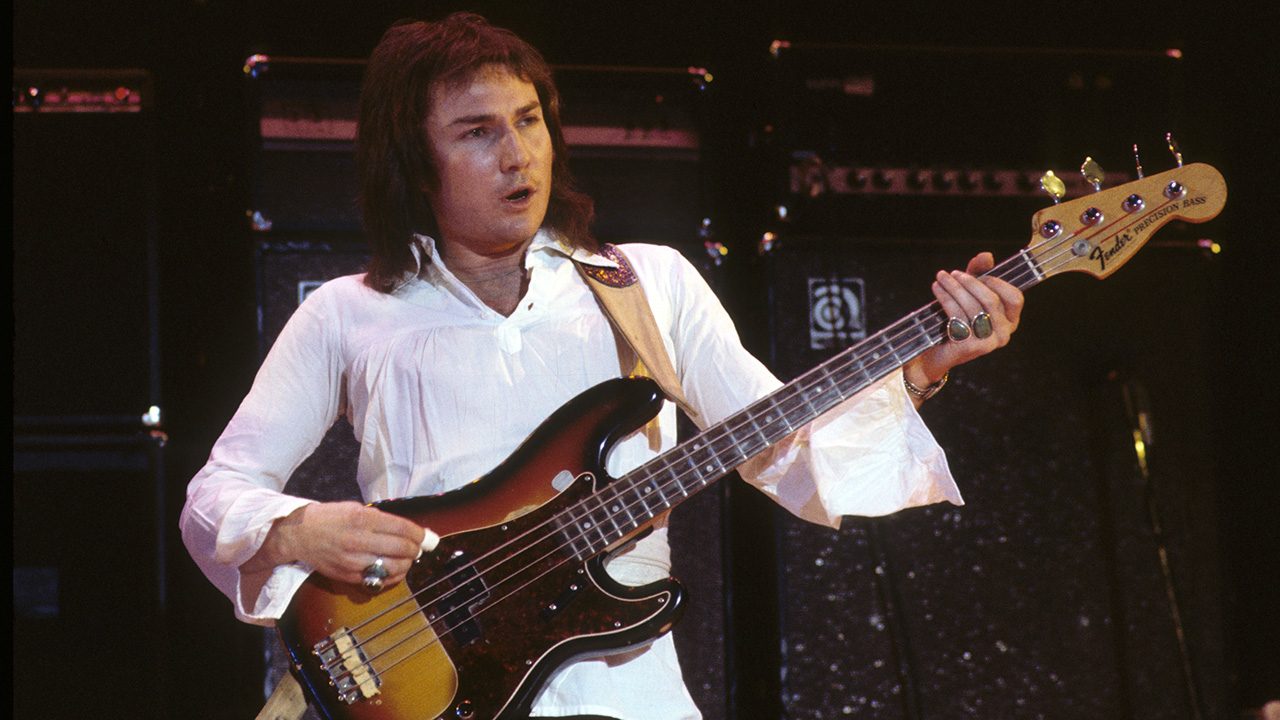
In 1968 Tony Stevens joined Kim Simmonds’ Savoy Brown, creating several slabs of blues rock mastery for the ages. Alongside Simmonds (guitars), Chris Youlden (vocals), Roger Earl (drums) and ‘Lonesome’ Dave Peverett (guitars/vocals), bassist Stevens co-authored albums like 1969’s Blue Matter, A Step Further and Raw Sienna, and 1970’s Looking In.
By ’71, though, the classic lineup had fallen apart – and Stevens went on to form Foghat with Earl, Peverett and newcomer Rod Price. Success came quickly, with 1972’s Foghat and 1974’s Energized notable high points in their output.
But it wasn’t working for Stevens, who left just a year before Slow Ride made Foghat into blues rock darlings. He went on to appear on hit British TV show Rock Follies and touring with Bob Segar and AC/DC in Midnight Flyer.
Then, with encouragement from producer Rick Rubin, he rejoined Foghat in the early ‘90s, and stuck around until 2005, when a very public – and ongoing – dispute led to him forming Slow Ride. He avoids discussing his former colleagues and bristles at the idea of rejoining them.
“It would be nice to be remembered as the motion that put the movement into the songs, with my drummer, the solid rock,” Stevens says on a brighter note. “I hope I influenced up-and-coming bassists who never saw or thought of my particular way of approaching songs.
“As for regrets, I have a few, but I did it my way. Watch this space for what’s next!”
What inspired you to pick up the bass?
“I was playing lead guitar in a group when a TV company wanted to do an English version of The Monkees, so I had to switch to bass. My first bass was a Danelectro Longhorn, which I sold to a collector in Thailand.”
What went into shaping your early bass tone?
“Tapping my fingertips – I play fairly hard, which stops blood blisters. The Acoustic amps in the ‘60s were a bass player’s dream, and mine!”
How did you meet Kim Simmonds?
“I went for an audition for Savoy Brown in the autumn of 1967. There were nine other bass players. They liked my playing style and guitar as well, so I got the job. Then I was told they were picking me up in three hours for a small tour of the Northern club scene – and I had to take it or leave it. Four hours later I was trying to learn their songs at the first show in Birmingham!”
Looking In is considered by many to be Savoy Brown’s greatest record. What was your approach?
“It was the first album without the singer and main songwriter, Chris Youlden. Lonesome Dave took over the vocals, and Dave and I were able to write songs. I wrote Poor Girl, which they made into a single. Dave and I wrote Leaving Again – I wrote the music and Dave the words. As for bass sound, I went into the board direct because there was less drift.”
What led to the end of your time in Savoy Brown?
“In late 1970, Dave, Roger and I had a meeting with Kim in a hotel room in San Francisco. He sacked me; his excuse was I’d never liked him. I said, ‘It’s probably that people want my songs for singles rather than yours!’
“Kim told Roger his drumming wasn’t great and he’d have to practice more if he wanted to stay. He said he was happy with Dave. Kim left, and we looked at each other. I said, ‘Well, I’m gone, but you both have families. You both must do what you need to do.’

“Roger and Dave both said, ‘Fuck it – we’re leaving.’ At the end of the tour we were paid off, and we decided we’d get together in 1971, form a new group and get a new guitarist.”
What were the biggest differences between Dave and Kim?
“Dave was easy – his style was always more rock ’n’ roll. Kim was tougher; he got into jazz guitar and started to incorporate jazz solos into our rock songs, which you could see made the audience uncomfortable. He was rock and slightly country towards the end, while Dave was rock ’n’ roll, rockabilly and boogie. They were great people to learn from as a bass player.”
Along came the revelation – the Acoustic 371… Carl Raddell, John Paul Jones and many others started using that setup
How did your rigs differ from Savoy Brown to Foghat?
“My Savoy Brown setup was a 4x12 Marshall bass amp and cabinet. Then along came the revelation: the Acoustic 371, with the 18” speaker facing backward inside the cabinet and a solid-state head. The sound was amazing!
“Carl Raddell, John Paul Jones and many other great bass players started using that setup. I bought one for each side for when we were playing on big stages. I used my double-neck bass for most of the Energized sessions.
“Once again, I went through the board – the Acoustic amp would have been overpowering. I had one of my songs on there, Fly by Night, plus a hand in writing other songs; I came up with the riff for Step Outside.”
What led to your leaving Foghat?
“I didn’t want to be the manager’s puppet to use when he wanted. Also, I said to the boys, ‘We’re touring too much – we’re not giving the audiences time to forget us, then remember us when we have a new record. We should go to other countries rather than keep on playing America.’
“I was happy to leave. I was in a hit TV show, Rock Follies, that was shown around the world. The album was number one, too. Then I went to Ibiza with a new band and I ended up living there for 22 years.
“After that I formed Midnight Flyer with Maggie Bell. Our first gig was with Bob Seger in Wembley Arena – two nights with 8,000 fans per night. It was wonderful. We went to Europe with Bob and played many army bases and big cities. After that, we were offered a 55-date tour with AC/DC in America.”

What was it like touring with AC/DC?
“They were a great bunch of lads who were very protective of Maggie and the band. After leaving Midnight Flyer, I had a small spell with two Australian girls in Cheetah. That was fun; we almost won the David Essex Showcase. Unfortunately, the set designer was a prima donna and wouldn’t allow amps and drums on stage, so we blew it out.”
What led to the reformation of Foghat after Rick Rubin got involved?
“The original manager was back; and Rick Rubin wanted all the original members to make a new album and tour. Unfortunately, the deal was screwed up by incompetence from the powers that failed.”
We were lucky to have Dave Peverett for his last tour in 1999… It was a pleasure to play beside him again
What was your bass rig like for the reunion?
“My Acoustics were still active. When I was away from Foghat I used to go to music shows. In Frankfurt, Germany, the creator of Warwick basses, Hans-Peter Wilfer, turned me on to them.
“We met when I was touring the Eastern Bloc from 1984 to 1988. Those guitars were amazing. Amp companies offered me setups galore! In the end I chose Hughes & Kettner in America because they were easier to swap out if something went wrong.”
What are your memories of Dave Peverett’s last days?
“We were lucky to have Dave for his last tour in 1999. He had gone through months of chemo and came back lighter, but with so much energy. It was a pleasure to play beside him again. I spoke to him and his wife, Linda, around New Year’s Day 2000; he was cheery. Then, in February 2000, I got a call saying he had passed. I was in Ibiza and got the next flight out to Orlando.”
Why did you leave Foghat again?
“Greed and ego. I didn’t have to leave – I chose to. Instead of creating problems for one of the members because he had a sick child, someone’s lawsuits would have stopped everyone from playing and him earning money. Hence, my band, Slow Ride, was born.”
Are you upset they’ve continued without you? Would you consider playing with the current band? If so, what would it take?
“No; and no, not with the current band; but wait and see!”







